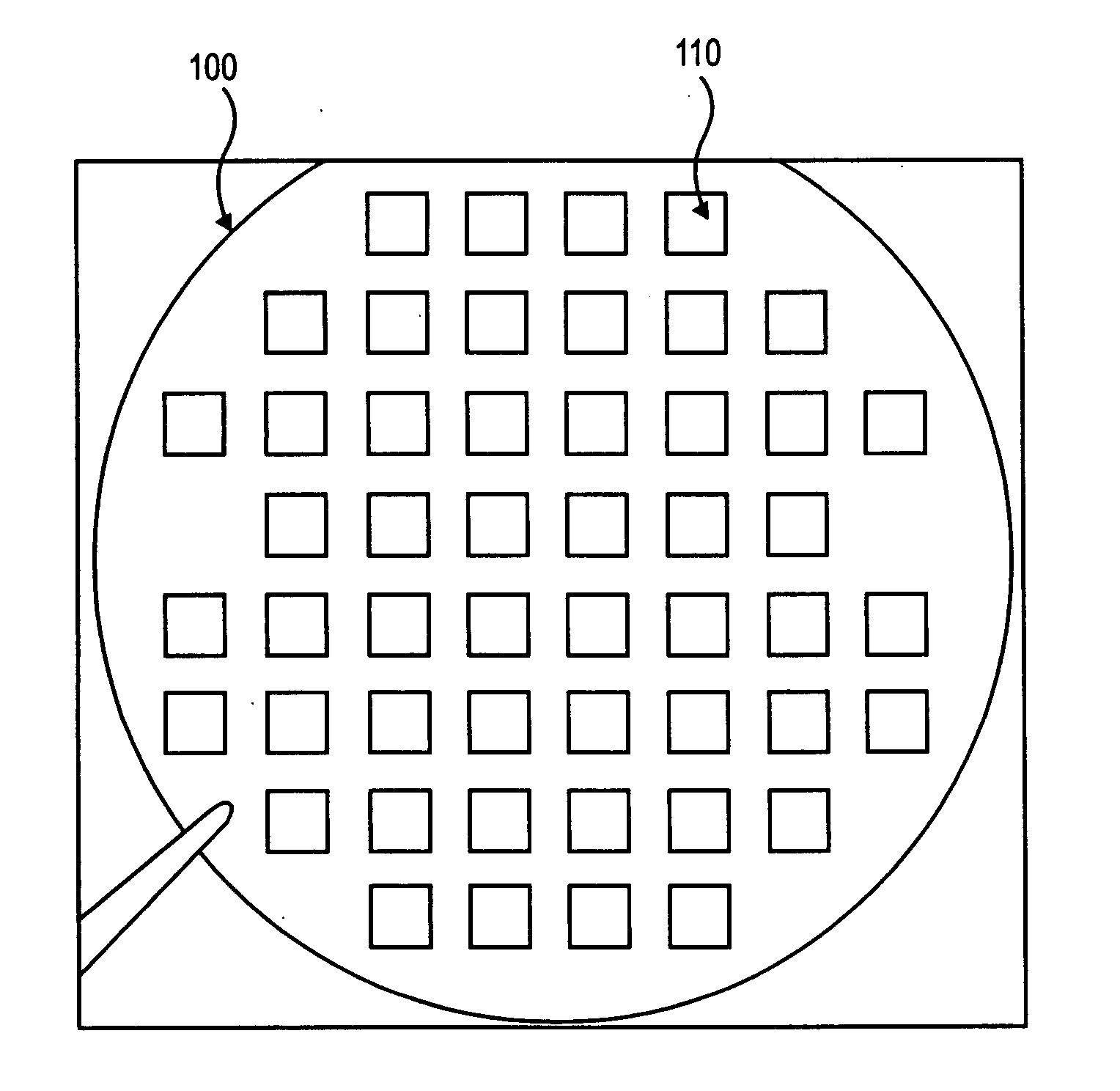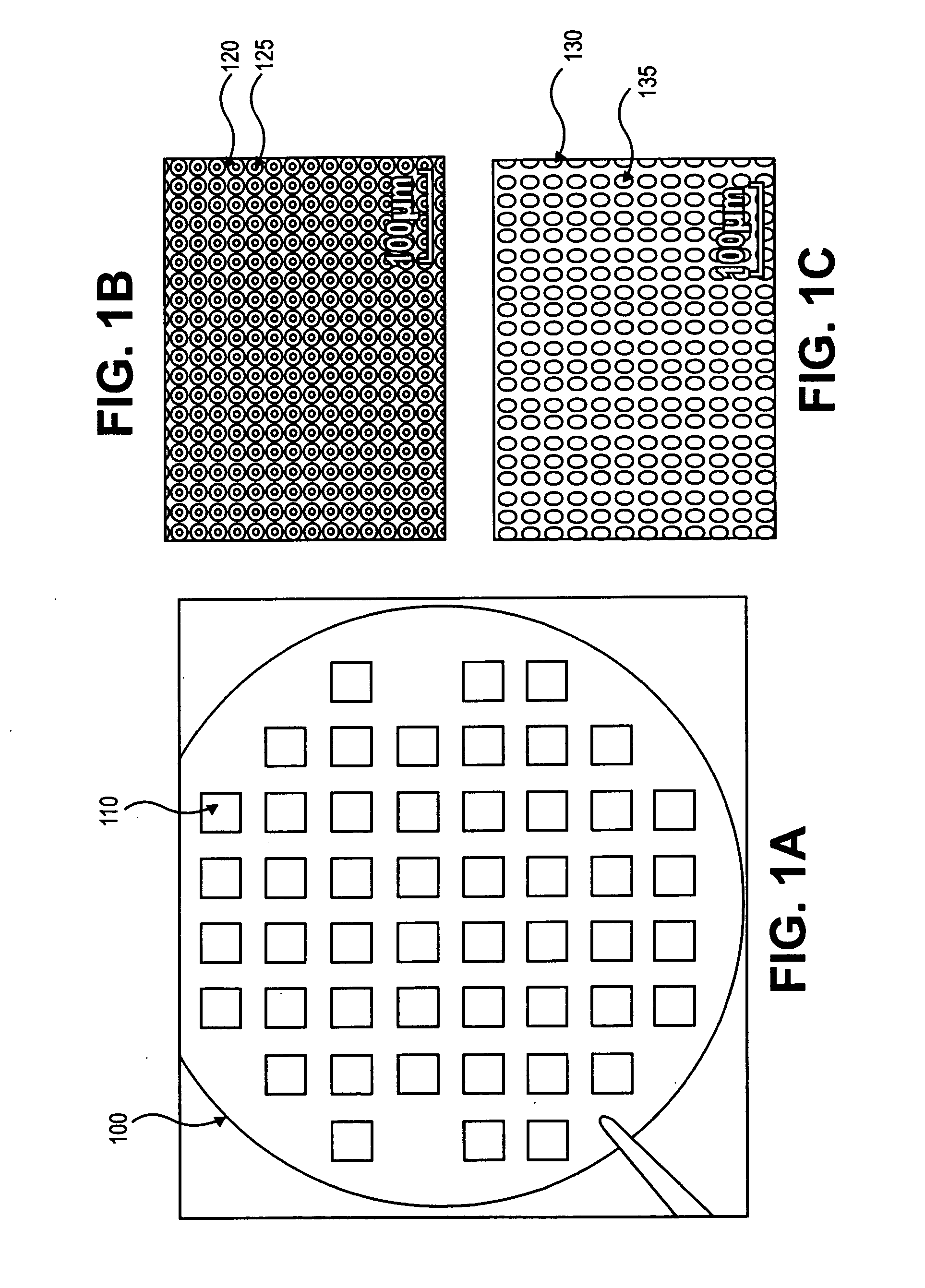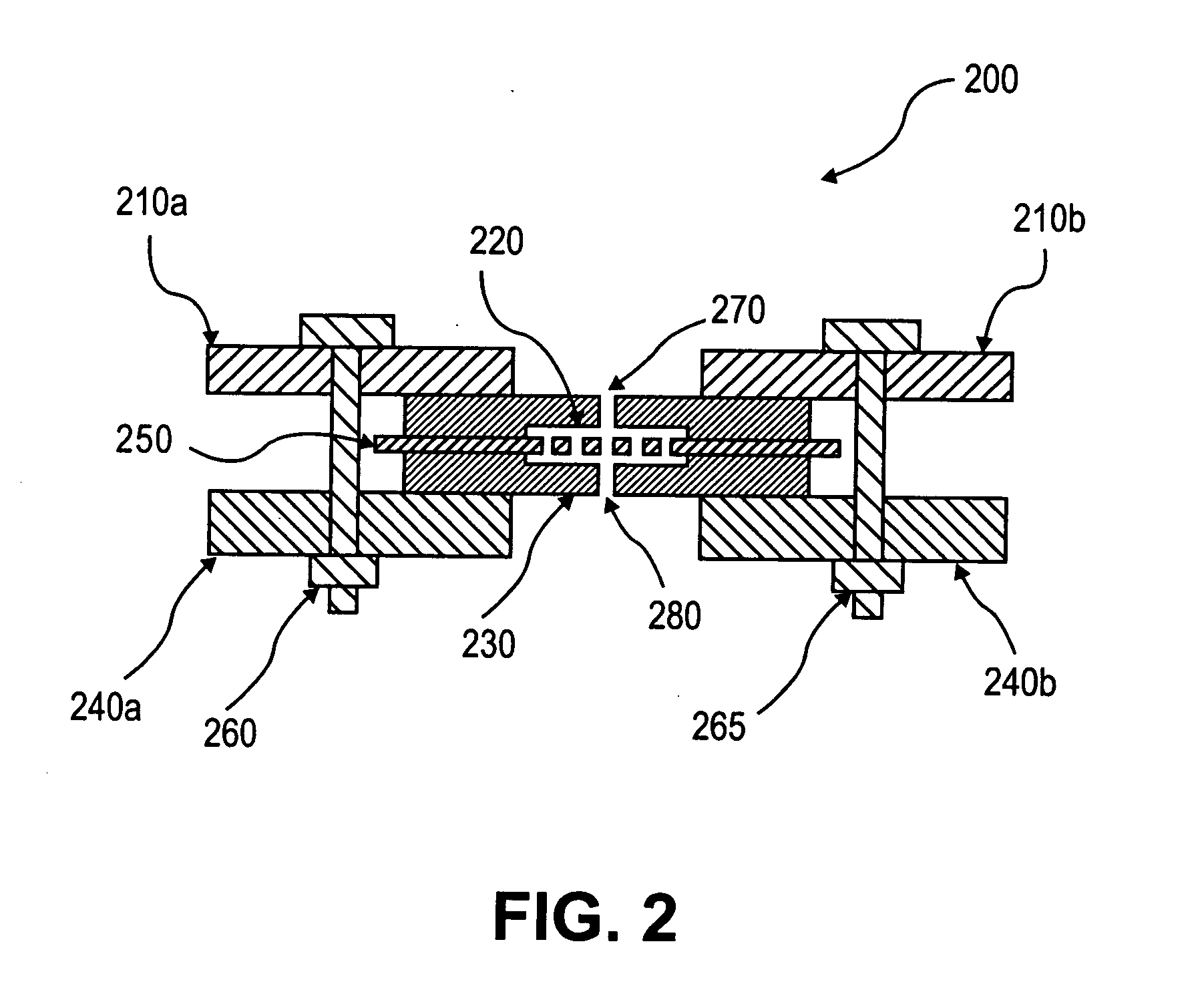Uses of parylene membrane filters
a polycarbonate filter and parylene technology, applied in the field of polymeric membranes, can solve the problems of insufficient sensitivity, efficiency and specificity of circulating tumor cells, difficult to detect or obtain blood cells at much lower levels, and insufficient available technologies to identify circulating tumor cells with the requisite sensitivity, efficiency and specificity, etc., to achieve high efficiency
- Summary
- Abstract
- Description
- Claims
- Application Information
AI Technical Summary
Benefits of technology
Problems solved by technology
Method used
Image
Examples
example 1
Parylene Membrane Performance
[0132] The design, fabrication and testing of a parylene membrane filter device according to the invention is described. Even without much optimization, the device demonstrated 89% recovery and 9 log 10 enrichment to out-perform most current methods used in the field (see, Lara, O., et al., Experimental Hematology, vol. 32: 891-904 (2004)). Moreover, less than 10 minutes can be required for each sample separation, compared to current multistep processing needing more than 1 hour.
[0133] Two filters as shown in FIG. 1 were tested in this initial study,. The first parylene membrane filter had an array of circular holes with a 10 micron diameter and the second parylene membrane filter had an array of 8 by 14 micron oval holes. To fabricate these membrane filters, photoresist AZ1518 was spin-coated on silicon wafer, followed by 10 micron parylene-C deposition and patterning with RIE. Finally the whole film was acetone released overnight. The individual memb...
example 2
Capture and Detection of Bladder Cancer Cells in Urine
[0141] Background to the Example: Bladder cancer is an important public health problem. With its incidence continuing to increase, bladder cancer is now the fifth most common cancer in US, with an estimated 56,500 new cases predicted for 2002, of which 12,600 patients are expected to die of the disease. Cystoscopy is an invasive and relatively costly technique for detecting bladder cancer. The method can be inconclusive at times, particularly in cases of cystitis. A simpler, noninvasive assay for detecting recurrence of bladder cancer is needed.
[0142] A clinically useful urinary marker assay should be easy to perform, have minimum requirements for sample processing and be highly sensitive and specific in diagnosis. Urinary cytology can serve as an excellent test for screening because it is simple, non-invasive and inexpensive; but, in general, experience in the field has generally demonstrated the limitations of urinary cytolog...
example 3
Enrichment and Capture of Circulating Endothelial Cells in Blood
[0147] In this example, circulating endothelial progenitor cells are captured and detected.
[0148] Background to the Example: The number of circulating endothelial progenitor cells in an individual's blood—the precursor cells to those that line the insides of blood vessels—may be an indicator of overall cardiovascular health. The endothelial cells lining the blood vessels provide essential communication between the vessels themselves and circulating blood cells, allowing the blood to flow smoothly. In diseases such as atherosclerosis, however, the endothelial layer becomes damaged and the vessels do not function efficiently. Until recently, scientists believed that nearby endothelial cells were recruited to help repair damaged blood vessels or form new ones to circumvent blocked vessels or to repair wounds. Evidence now indiicates, however, that endothelial progenitor cells, probably generated in the bone marrow, circu...
PUM
| Property | Measurement | Unit |
|---|---|---|
| Fraction | aaaaa | aaaaa |
| Fraction | aaaaa | aaaaa |
| Area | aaaaa | aaaaa |
Abstract
Description
Claims
Application Information
 Login to View More
Login to View More - R&D
- Intellectual Property
- Life Sciences
- Materials
- Tech Scout
- Unparalleled Data Quality
- Higher Quality Content
- 60% Fewer Hallucinations
Browse by: Latest US Patents, China's latest patents, Technical Efficacy Thesaurus, Application Domain, Technology Topic, Popular Technical Reports.
© 2025 PatSnap. All rights reserved.Legal|Privacy policy|Modern Slavery Act Transparency Statement|Sitemap|About US| Contact US: help@patsnap.com



